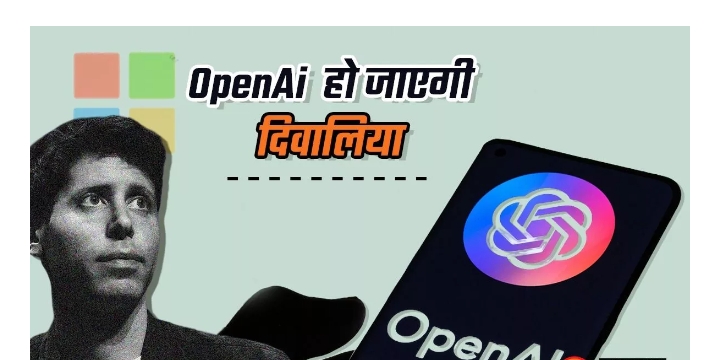OpenAI
A new report has revealed that the AI development studio of OpenAI owner Sam Altman has brought the company to the brink of bankruptcy. The beginning of its downfall is visible with the application for a trademark on GPT. ChatGPT’s website has seen a downfall since May. Let us know about it in detail.
OpenAI spends about $700,000 a day to keep ChatGPT running. The cost does not include other AI products such as the GPT-4 and DALL-E2. For the time being, it is only progressing because of Microsoft’s $10 billion funding.
OpenAI, the AI studio that practically started the conversation about AI among regular, non-technical people, could be in big trouble. In an attempt to become the face of generative AI through its AI chatbot ChatGPT, Sam Altman’s AI development studio has put itself in a position where it may soon have to declare bankruptcy, according to a report in Analytics India Magazine. Is.
The trademark on ‘GPT’ itself started when OpenAI applied for a trademark on ‘GPT’, it was seen as the beginning of OpenAI’s downfall, with many believing that people would eventually abandon the technology. Although the trademark was never protected, there is clear evidence that many individuals are indeed moving away from OpenAI’s GPT product.
Decline in May When usage of the ChatGPT website declined from May to June, this was attributed to students being on summer break or the introduction of the ChatGPT API, which caused users to use their own bot instead of using the native service. started making. Declining user base By the end of July, ChatGPT’s user base had dwindled further. According to SimilarWeb, July saw a 12 percent drop in users compared to June, falling from 1.7 billion users to 1.5 billion users. However, this figure does not include API usage, which is where most of OpenAI’s revenue is coming from.
A significant factor in this decline could be API cannibalism. Many companies were discouraging their employees from using ChatGPT directly, but allowing them to employ the API to integrate the Large Language Model (LLM) into various workflows.
The notion that user decline is solely due to API usage for building personalized products seems absurd. Open-source LLM models that are free to use and reuse are playing a more important role. For example, META’s LLaMA 2, in partnership with Microsoft, allows commercial use of the LLM. In such a case, why would anyone want the paid, proprietary and restricted version of OpenAI over the more customizable and easier-to-use LLaMA 2, especially given its potential superiority in specific scenarios?
Conflict between Sam Altman and OpenAI Furthermore, the shift from non-profit to profit-oriented, along with CEO Sam Altman’s lack of equity ownership, indicates OpenAI’s interest in profitability. Although Altman may not prioritize profits, the company does. Despite this, OpenAI has not achieved profitability; Its losses since the development of ChatGPT reached $540 million. Microsoft’s $10 billion investment has kept OpenAI going. However, Analytics India magazine reports that OpenAI’s target of reaching $200 million in annual revenue by 2023 and $1 billion in 2024 seems ambitious, given its mounting losses.
While the transition to a paid model could generate revenue, OpenAI’s financial outlook remains unclear. Potential revenue could come from API purchases and use of GPT-4-based chatbots or offerings like DALL-E2, but their financial details are unclear.



